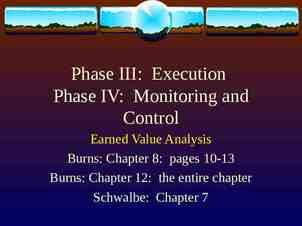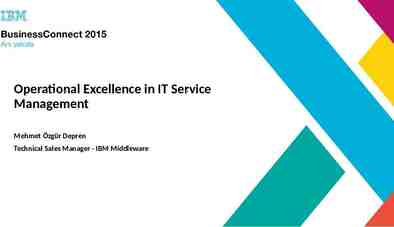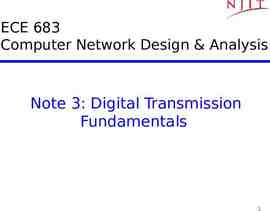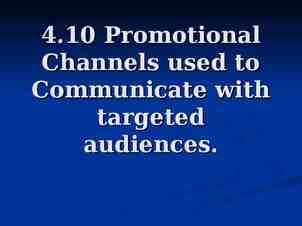University Procurement August 2020
37 Slides982.77 KB

University Procurement August 2020

Procurement in the University of Strathclyde Status Final Owner University Procurement Source location Procurement website Endorsed Head of Procurement Publication August 2020 Next Review Date July 2021 Update August 2020

What We Will Cover 1. Public Procurement Legislation 2. University Value Thresholds 3. Types of Contracts and Terminology 4. The Role of Procurement & the Stakeholder 5. The Role of Specifications 6. Tendering Processes 7. Single Source Justification – awarding without competition 8. Contract Notices 9. What does this mean in practice 10. Award Notices and Notification 11. Community Benefits 12. FMS Policies & Procedures o New Supplier Requests o NO PO No Payment o Request for Payment

Legislation and Guidance Directive 2014/24/EU The Public Contracts (Scotland) Regulations 2015 The Public Contracts (Scotland) Amendment Regulations 2016 The Procurement Reform (Scotland) Act 2014

EU Procurement Principles Free Movement Proportionality Transparency Competition Mutual Recognition NonDiscrimination Value for Money (VfM) Equal Treatment 5

Scottish Procurement Context Priorities: – Embrace EU process and wider policy role – Sustainability Procurement Reform (Scotland) Act 2014: – Additional to EU Directive for lower threshold – Sustainable Procurement Duty now legal requirement Public Contracts (Scotland) Regulation 2015 replaced 2012 version 6

Summary All governed by EU Principles Goods /Services 50k Works 2m Local Local Governance Governance Local procurement rules E.g. 3 quotes E.g. call off from framework Goods /Services 189k Works 4.7m Goods /Services 50k to 189K Works 2m to 4.7m Procurement Procurement Reform Reform (Scotland) (Scotland) Act 2014 Act 2014 Procurement Procurement (Scotland) (Scotland) Regulations Regulations 2016 2016 Regulated procurement rules Additional Rules Lower Level of Spend Public Contracts Public Contracts (Scotland) Regulations (Scotland) Regulations 2015 2015 EU Regulated procurement Transpose EU Rules Higher Level of Spend

Non Compliance Procurement Risks Litigation, Damages and Fines Claw back of funding Potential Criminal Charges Costly Delays Reputational Damage Loss of Value, Lost Opportunities, and Resource Impacts 8

The Value of your Requirement Important information is contained within Regulation 6 of the Public Contracts (Scotland) Regulations 2015 for estimating budgets, and completing new supplier request forms. The full regulation applies however, the points on the next slide are particularly relevant for the University.

Some relevant points from Reg 6 Methods for calculating the estimated value of a contract - Regulation 6. (1) A contracting authority must calculate the estimated value of a contract by reference to the total amount payable under it (regardless of the form of such payment), not including value added tax. (2) The total amount payable includes the amount payable as a result of the exercise of any form of option and any renewal of the contract as explicitly set out in the procurement documents. (5) A contracting authority must not choose a method to be used to calculate the estimated value of a contract with the intention of excluding the contract from the application of these Regulations. (6) A contracting authority must not sub-divide a contract with the effect of excluding the contract from the application of these Regulations unless such sub-division is justified by objective reasons. (10) In the case of a public works contract the estimated value shall include the total estimated value of any supplies and services that are necessary for executing the works and are to be provided by the contracting authority to the contractor. (16) In the case of a public service contract which does not indicate a total price, the estimated value must be calculated by reference to— (a)in the case of a contract for a fixed term of less than or equal to 48 months, the total value of the contract for its full term; and (b)in the case of a contract for a fixed term of more than 48 months or a contract without a fixed term, the monthly value multiplied by 48.

Estimating The value of a requirement

Frameworks Staff should check the Framework Register first Benefits of using a Framework: Terms & conditions have been agreed Framework suppliers have been pre-qualified as having the correct capabilities and capacity

Goods and Services Process Procurement Value (Ex VAT) Process Less than 3,000 No quotes required. 3,001 to 24,999 Minimum of 3 recorded quotations 25,000 to 50,000 Quotation in consultation with UP via Public Contracts Scotland Over 50,000 Contact UP will tender Above 189,330 regulations Tender following EU

Works Process Procurement Value (Ex VAT) Process Not exceeding 99,999 Minimum of 3 written quotations Above 100,000 Tender in consultation with UP Above 2,000.000 Regulated procurement process which must be advertised on the tendering portal (PCS) Above 4,733,252 Tender following EU regulations

Who Tenders Contracts? Crown Commercial Services – Class A National requirements. Scottish Government - Class A - Country wide requirements. Centres of expertise (APUC for HE/FE) – Class B – Country wide and Nationally with partners. University Procurement - Class C contracts, call-offs from frameworks and quick quotes.

Terminology Frameworks A general term for agreement with suppliers that set out terms and conditions which specific (call-offs) can be made through. Contracts Established as a call off under a framework or a requirement tendered or established in line with legislation or guidance. European Single Procurement Document (Scotland) ESPD(S) This document replaces the previous Pre-Qualification Questionnaire (PQQ) and is mandatory for use in all European Procurements.

The process What does Procurement Do? Consider the sourcing strategy and the commercial element Support with advice on the correct procurement route Develop documents with support on specification. Support contract/supplier management Consider compliance with Procurement Legislation and mitigate risk for the University.

Where does the Stakeholder come in? Identify requirement (goods, service, works) and the estimated budget/value of the requirement Complete Request for Procurement Action Form (RPA) and engage with Procurement Complete a specification Consider criteria and reserve time for evaluation.

Specification “A statement of needs to be satisfied by the procurement of external resources” Examples of a specification can be: Performance specification (output) – describes what the final product/service must be capable of doing and any risks to the University or the public that might arise from the product/ service Conformance specification (input) – describes how the contractor is expected to carry out the requirement to achieve desired output

Technical Specifications Equal access to suppliers, no unreasonable obstacles Specify in generic technical or performance terms Do not refer to: Specific make, source, particular operator’s process, trade marks, patents “Or Equivalent”: if justified by subject matter, or where precise description otherwise impossible Module 2A: Reform Act 20

Stakeholder and Procurement Roles Process Department UP Draft Contract Strategy Agree selection and award criteria Define specification & service level expectations Create & publish ESPD / tender documentation Checks for compliance / H&S / Financial / Insurance Evaluate technical submission Evaluate quality / commercial submission Draft Contract Authorisation Report/ facilitate contract award/raise purchase order 21

Open Procedure Contract Notice—Procurement documents made available with notice Any operator can submit—30 Days (w/ electronic submission, 35 w/o) from notice Reduced to 15 days if PIN used 22

Restricted Procedure Call for Competition Request to participate with info for selection (30 days minimum) Narrow down participants (minimum 5 qualified candidates) 25 days for receipt of tenders (w/ electronic submission, 30 w/o) Sub-Central Authorities: few as 10 days* *Should ask for mutual agreement 23

Procedures with Negotiation/Flexibility Negotiated Procedure without Prior Publication Competitive Procedure with Negotiation Competitive Dialogue Innovation Partnership 24

Awarding Without Competition No tenders or no suitable tenders (but can’t substantially alter the conditions); Only one supplier due to: a. Artistic reasons; b. Competition being absent for technical reasons; c. Protection of exclusive rights such as IP rights. (N.B. a. and b. above only apply where there is no reasonable alternative or substitute and the procurement has not been artificially narrowed.)

Awarding Without Competition (2) Extreme urgency (not caused by the Public Authority); Repetition of similar works or services where this possibility was flagged in the original procurement; the estimate value included these additional works or services; and not more than 3 years have elapsed since original contract. Research and development contract.

Awarding Without Competition (3) Partial replacement or extension of existing supplies or installations where a change of supplier would result in incompatibility or disproportionate technical difficulties in operation or maintenance. Supplies quoted and purchased on a commodity market. Liquidation sale.

Research Services Exemption Specific R & D Services are exempt, if: – Benefits (e.g. Intellectual Property) do not solely accrue to public body, and – Activity is not solely financed by the public body Seek Legal Advice! 28

Contract Notices Published to the market through Government Portal (Public Contracts Scotland) Sets out minimum standards Sets our award criteria to be evaluated against Sets the roadmap for the full procurement process

What does this mean in practice? Spend of are over 50k is classed as a Regulated procurement. Mandatory use of electronic communication/ tendering above 50k Award notices above 50k must be published on Public Contracts Scotland portal Public bodies must maintain a contracts register for regulated procurements

What does this mean in practice? (2) There are new processes to consider using Supplier self declaration (ESPD) Suppliers can be excluded due to poor performance Cannot award on lowest price only (MEAT) Procurement strategies and annual reports required.

Award Notices and Notification Award Notices: – – – – Legal obligation Published no later than 30 days after award Published to the public Details successful supplier, contract value etc Feedback to bidders: – – – – – Legal obligation Scores achieved against award criteria Reasons for scores Successful supplier scores Advantages of successful suppliers bid

Community Benefits Legislation Consideration for Contracts above 4m Good practice Include in other contracts to contribute to the value achieved by spending the University’s funds.

Setting up Suppliers Procurement adds supplier to FMS when the contract is awarded. Suppliers are refused to be added when no contract is in place Supplier on FMS doesn’t mean there is a contract Check supplier details are correct (e.g. Ltd, PLC, Group).

No PO No Payment The University has enforced this policy. An organisation who receives Public funding has an obligation to pay contractors in 30 days without a PO this may not happen! All invoices must be sent electronically to finance at [email protected] to ensure payment. Placing a purchase order is a fundamental procedure to adhere to.

Request For Payment (RFP) These are payments requested by cheque or direct payment They are all recorded and reported This is bypassing the public funds procedures Creates risk for the University Rule that only under 3k will be allowed by sundry payment.







